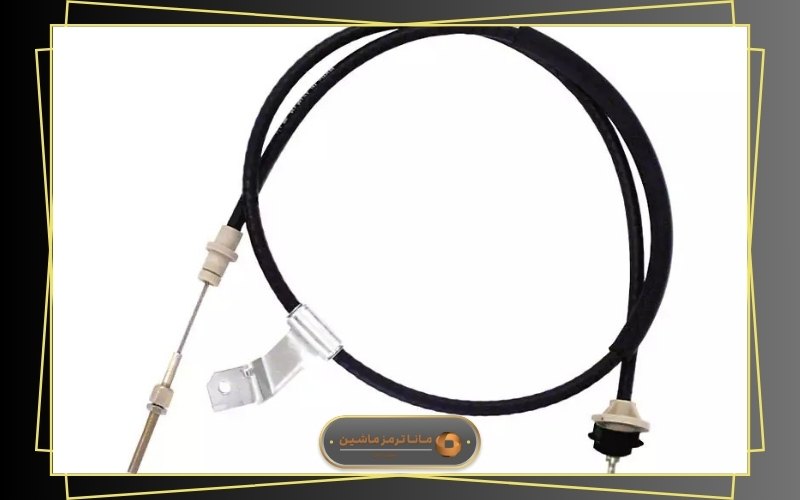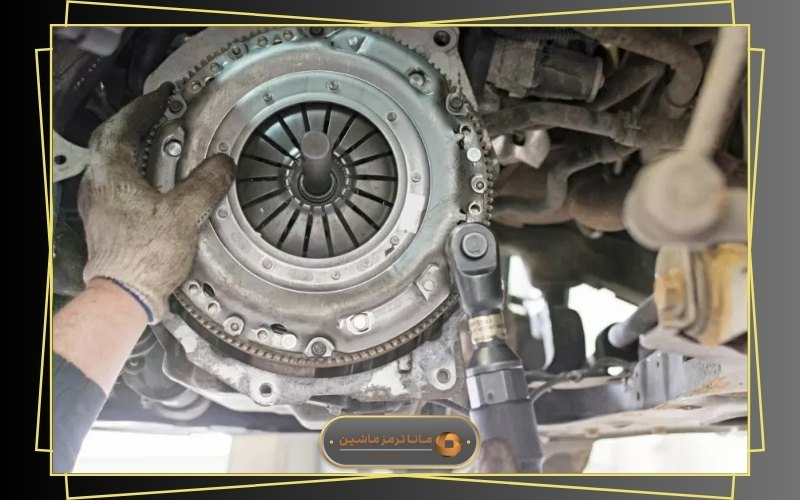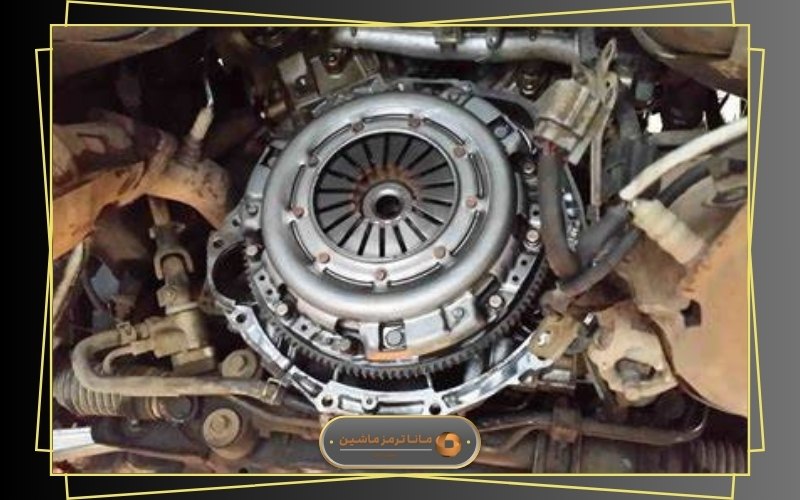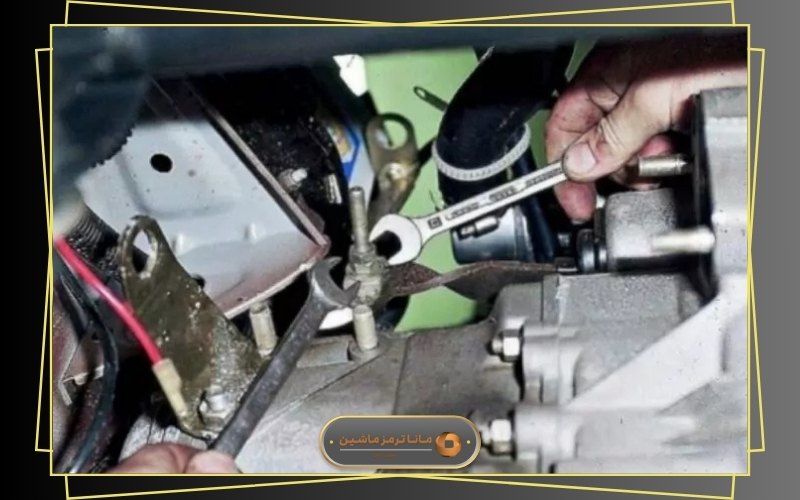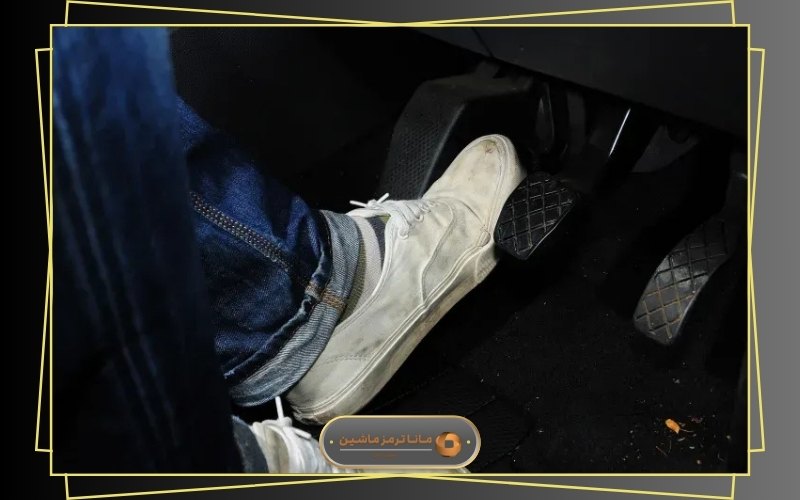Breaking of the clutch cable is one of the common problems in manual transmission cars that any driver may encounter. This issue can lead to serious problems such as difficulty in shifting gears, failure to start the car, and other performance-related issues. Therefore, if you are facing the problem of a broken clutch cable for any reason, stay with us as we thoroughly examine the causes, symptoms, and solutions to fix this problem.
Clutch Cable and Its Role in Vehicle Operation
The clutch cable is a metal cable responsible for transmitting movement from the clutch pedal to the gearbox system. One end of this cable is connected to the clutch pedal, and the other end is attached to a lever inside the gearbox. When you press down on the clutch pedal with your foot, the cable is pulled, causing the engine to disengage from the gearbox so you can change gears.
The clutch cable is housed inside a plastic sheath, which allows it to move smoothly and with minimal friction. In other words, when you press the clutch pedal, the cable inside the sheath is pulled, disconnecting the engine’s rotational movement from the gearbox system, enabling you to shift gears.
Signs of Clutch Cable Failure
Clutch cable failure can lead to various problems, often noticeable while driving, especially during gear changes. Some of the most important signs of a failing clutch cable include:
Clutch Slipping or Riding
One early sign of clutch cable failure is clutch slipping. This usually occurs when rapid acceleration is needed, driving uphill, or carrying heavy loads. If you have to press the clutch pedal hard for the car to move, it indicates the clutch is not functioning properly. In this situation, the engine speed (RPM) increases but the vehicle speed doesn’t change. This can cause excessive heat in the clutch system and damage other components.
Clutch Pedal Rising Slowly
When the clutch cable is close to snapping or breaking, the clutch pedal will rise slowly when released. In this case, you may need to push the pedal back up before pressing it down again.
Loose Clutch
If pressing the clutch pedal feels unusually easy and the pedal moves downward with little resistance, it means the clutch is loose. This indicates an issue in the clutch cable system that needs to be checked.
Difficulty in Shifting Gears
When the clutch cable malfunctions, gears may not shift smoothly, requiring extra force to change gears. This problem often recurs when the clutch isn’t working properly.
Noise When Pressing the Clutch Pedal
If you hear grinding or scraping noises when pressing the clutch pedal, the clutch disc or the release bearing might be faulty. The release bearing presses the clutch disc to disengage the clutch. Noise from this part signals a problem.
Stiff Clutch Pedal
If the clutch pedal becomes hard to press and requires excessive force, the clutch cable might be stuck due to dirt, drying out, or tangling. You’ll need to apply more pressure for the pedal to move.
Clutch Not Working
One of the most serious clutch problems is complete failure. In this case, the clutch doesn’t disengage at all, making it impossible to shift gears. This issue is commonly called a “dead clutch.”
Vehicle Shaking
If the vehicle shakes abnormally after releasing the clutch pedal, it likely means the clutch system is still engaged. These vibrations can indicate serious clutch system issues.
Reasons for Clutch Cable Breaking
The clutch cable can become stiff, loose, or break due to various reasons. Some of these causes include:
- Natural Wear: Over time, due to continuous use, the clutch cable naturally wears out.
- Exposure to Dirt and Moisture: Exposure to moisture and dirt can cause rust and reduce the cable’s flexibility.
- Drying Out and Tangling: If the clutch cable dries out inside its sheath or gets tangled, it may not move properly, leading to clutch issues.
- Excessive Stress: Continuous and excessive pressure on the clutch pedal, especially under harsh driving conditions, can cause the cable to snap.
Understanding these causes and symptoms can help you prevent bigger problems and ensure timely inspection and repair of the clutch system if needed.
Common Causes of Clutch Cable Breakage and Prevention Methods
The clutch cable is a vital component of the vehicle’s power transmission system, playing a crucial role in proper vehicle operation. Breakage or malfunction of this cable can lead to serious issues with gear shifting and vehicle control. In this article, we will review the main causes of clutch cable breakage and ways to prevent them.
Low-quality clutch cable
One of the primary causes of clutch cable breakage is the use of poor-quality, substandard cables. Weak cable alloys cannot withstand the pressures and friction generated by vehicle movement and, under high stress, suffer wear and ultimately break. Choosing a high-quality, standard clutch cable is a key factor in increasing the clutch system’s lifespan.
Excessive clutch usage
If you tend to keep your foot continuously on the clutch pedal or hold the pedal in a partially pressed position, you apply excessive pressure on the clutch cable. This constant pressure prevents the cable from returning to its original position, causing it to dry out, deteriorate, and eventually break over time. Avoiding this habit helps prevent such problems.
Extreme temperature variations
Severe temperature changes can negatively affect the clutch cable. Exposure to very high or low temperatures causes the cable to repeatedly expand and contract. In high temperatures, the cable softens and becomes deformable, leading to shape changes and potential breakage. Conversely, in low temperatures, the cable becomes brittle and dry, increasing the likelihood of failure.
Contamination of the clutch cable sheath
Dust, oil, and other contaminants around the clutch cable can impair its proper function. Such contamination can reduce friction or increase resistance inside the sheath, both of which prevent the cable from properly transmitting the necessary force for gear shifting. Over time, these contaminants cause the cable to wear and eventually break.
Drying out of the clutch cable
Failure to replace the clutch cable on time causes it to lose flexibility and dry out over time. In this state, the cable cannot move smoothly within its sheath, making gear changes difficult. Continued neglect can ultimately cause the cable to snap.
Bending of the clutch cable
The clutch cable may bend or deform due to improper installation or accidents. Such bending restricts the cable’s free movement inside the sheath and, due to shortened length and deformation, greatly increases the risk of breakage.
Driving on rough terrain
Driving on uneven or bumpy roads places extra stress on the clutch system. This increased pressure can lead to clutch cable breakage. If you frequently drive on such roads, it is advisable to regularly inspect and service your clutch system to avoid serious problems.
Clutch disc failure
The clutch disc is another critical part of the clutch system that should be inspected during vehicle servicing. Damage to the clutch disc over time can harm the clutch cable and eventually cause it to break. If clutch disc issues become severe, timely replacement is the best solution.
Solutions for Dealing with Clutch Cable Failure
If you notice that your vehicle’s clutch cable is having issues, don’t worry. There are solutions that can fix the problem and restore your car to better condition. Below are two main methods to address clutch cable problems:
Adjusting or Regulating the Clutch Cable
The first step when facing clutch cable issues is to adjust or regulate it. Many of the problems mentioned earlier can be solved by adjusting the clutch cable. You can do this easily by yourself by following these steps:
- Locate the clutch cable.
- At the end of the cable, there are two nuts. By adjusting these nuts, you can shorten or lengthen the cable so that the clutch pedal reaches the desired position.
Replacing the Clutch Cable
If adjusting the cable doesn’t fix the issue, you may need to replace the clutch cable. Some reasons that require clutch cable replacement include:
- Excessive drying out of the clutch cable
- Broken clutch cable
- Fraying of the clutch cable strands
- Tearing of the plastic sheath around the cable
- Bending or warping of the clutch cable
How to Drive If the Clutch Cable Breaks
If you realize while driving that the clutch cable has snapped, the best action is to contact roadside assistance to tow your vehicle to the nearest repair shop. However, if this is not possible, follow these steps:
- Stay calm: First, keep your composure.
- Engage first gear: Put the car in first gear and start the engine by pressing the gas pedal.
- Begin moving: Start driving and control your speed by adjusting pressure on the gas pedal.
- Change gears: To shift gears, release the gas pedal and change gears at the appropriate speed.
Important note: If you need to brake, you must start the entire process from the beginning.
In Conclusion
The clutch cable is a vital component of the vehicle that enables smooth gear shifting and movement. Regular care and maintenance of the clutch system, especially the clutch cable, can prevent serious problems. If you notice any unusual noises or difficulties in gear operation, immediately take your car to a professional mechanic to fix the issue and prevent further damage. By routine maintenance and servicing, you ensure your vehicle always performs at its best.

